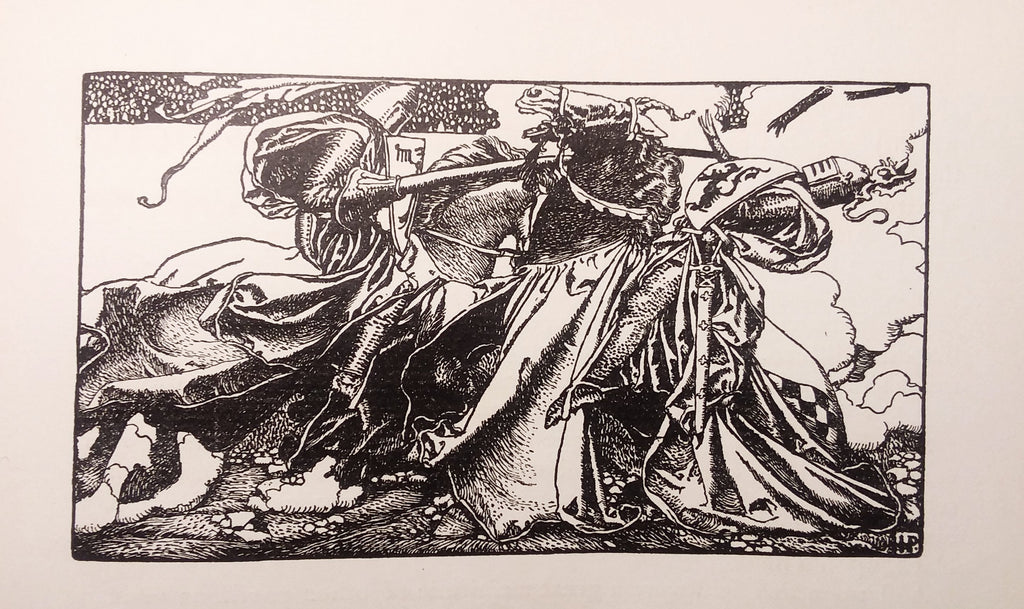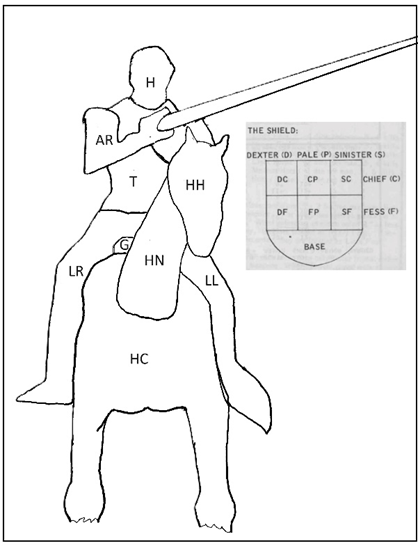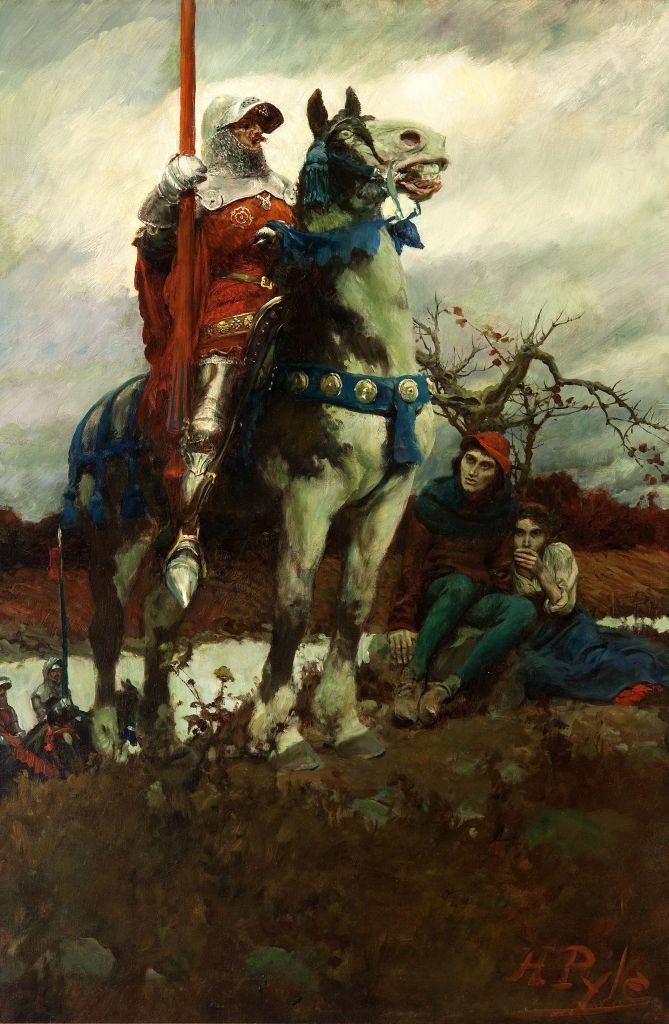
Dungeons and Dragons was originally published, it was as an offshoot of miniature war gaming. Specifically, the Chainmail rules for medieval war gaming in miniature. Within the Chainmail rules was hidden a small mini-game presenting a method for conducting jousting tournaments.
The general approach was for each combatant to secretly choose an aiming point, and a defensive posture. Then both combatants revealed their choices, which were then cross-referenced (attacker aim to defender posture) in the jousting matrix. The choices for defensive posture were limited by the aim point. But, this approach was left out of all versions of Dungeons and Dragons past the original edition, which itself only included it by reference to the Chainmail rules. In addition, the given approach was only for representing peaceful jousting using blunted lances and aiming only at the shield and helmet.
But, I play AD&D (first edition). This approach is fun. How to incorporate it into AD&D. Here’s my approach.

One way to harmonize this with AD&D normal attack procedure is:
- Charges check the longest lance results first. Most tournament bouts will be charges, but also equal length lances and hence checked simultaneously. Otherwise, use the normal initiative process.
- Treat I as automatic hits (just roll lance damage if using sharps).
- Treat U and H as attack opportunities. Roll to-hit as normal, apply damage as normal. Note: blunted lances are 1d4 damage ( but doubled for the charge).
- Keep the various effects (unhorsing, etc.) described by the Chainmail jousting rules.

But what about if you are jousting during combat? Should combat be limited to aiming at an opponent’s shield? No. Combat opens opportunities for aiming. Sometimes it’s enough to take out the opponent’s horse in order to remove a knight from battle. Real combat requires an expanded jousting matrix. Here’s my first take.


Procedure:
- On the charge, the longest lance checks first. Absent a charge, normal initiative is used.
- I is for injuries to the rider. Roll lance damage. If charging double the damage as normal.
- U and Helm (H) are attack opportunities. Roll to-hit and damage as normal.
- G – lance glances off. Save versus paralysis or Attacker unhorsed with no injury.
- M – Total Miss
- B – Breaks Lance. Save versus paralysis or Defender unhorsed with no injury.
- For the HH, HN, and HC it is the Attacker’s defensive posture that is cross-referenced rather than the Defenders.
- HI – horse injured. Roll lance damage. Horses killed, unhorse the rider and rider sustains injuries as if fallen ten feet. Horses hit at HC must save versus paralysis or be overborne. If the horse is overborne, then the rider is unhorsed and treated as if fallen ten feet.
- HT – Horse Trauma. Attack opportunity. Roll to-hit and damage as normal. Lances hitting HC must save v. crushing blow or break. Treat injury to horses as described under 6.
So, there you have it. It’s just a rough draft approach that should only be used for one-on-one encounters.


Leave a comment